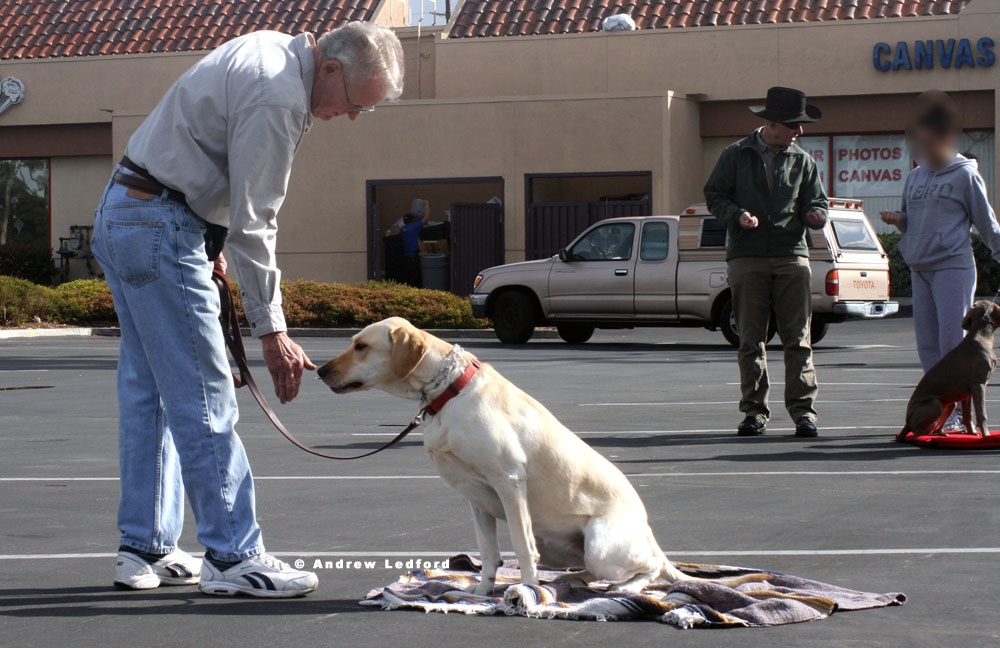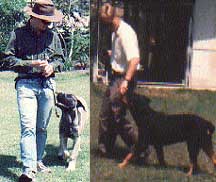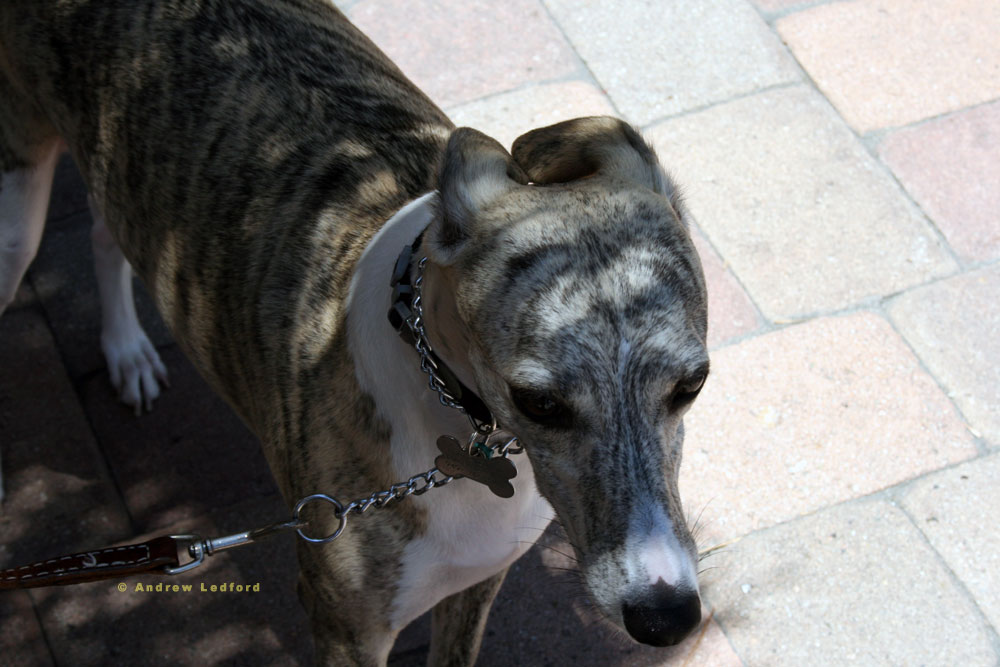Dog Obedience Training
Dog Obedience Training By Andrew Ledford 714-827-4058
This is the first part of a three part series.
Dog Obedience Training Tips
- Don’t let your dog ignore a command.
- Always enforce a command you do give.
- Don’t give a command you’re not prepared to enforce.
Obedience training improves communication between people and their dogs. It increases the signal to noise ratio.
Obedience training builds an effective foundation for communicating with your dog. This lets your dog know the proper response (behavior) that you expect in place of socially maladaptive behavior.
Teaching obedience commands creates a common language between you and your dog.
The obedience trained dog can respond properly to your commands, instead of neurotically trying to please and becoming ever more anxious with your displeasure. A well trained dog acknowledges the people in the family as the leaders and becomes more secure and calm in this bond of trust and authority.

Basic Commands
Dog obedience training basic commands – For commands taught in my training programs go to my list of commands
- “Heel” to walk on a loose leash
- Respond to “No!”
- “Sit”
- “Stay”
- “Down”
- Respond to “Release”
Obedience training can be used to help fulfill some of your dog’s basic needs, such as exercise, the security of knowing what’s expected, a feeling of accomplishment, and constructive social interaction. Obedience training will give your dog a job to do and can be useful in redirecting some of the mental energy of an animal that was meant to work.
Dog Obedience Training Styles
There are many styles of dog obedience training. Here I’m going to mention what I consider the two most common types. In future articles I will explore some of the less well known styles of training, some of which are becoming quite popular. This page should help you decide on the best style of training for you and your pet.
Balanced dog training uses both traditional leash and collar training combined with food reinforcement or other forms of positive reinforcement.
Balanced dog training uses both traditional leash and collar training combined with food reinforcement or other forms of positive reinforcement.

Obedience training with leash and food rewards
Two Most Popular Obedience Training Styles
The main types of training are leash/collar training and reward training. I consider the leash and collar training to be a hard training style, and reward training to be a soft training style.
Leash and collar training.
Both styles are very old; however, the leash and collar has been used since the middle ages and is considered the traditional style.

It’s quite likely that leash training is considered the traditional style because obedience training developed from military dog training. There are several reasons why this method would be preferred to using food, such as the nature of the dogs being trained, the task or mission of the animal, and the temperament and background of the military handler/trainer.
However, even military dogs were trained to perform very reliable behavior using food as well.
Food or reinforcement training
Food or reinforcement training is as old as or older than leash and collar training. in the late 19th and early 20th century food was used more for dogs that performed in somewhat controlled conditions, such as for a circus act.
There are two works of research that eventually made reinforcement training one of today’s most popular training styles. The first is the research of B.F. Skinner on operant conditioning and the second is Ivan Pavlov’s research on classical conditioning. Every trainer should understand at least the basic principles to both these theories about behavior.
By combining these two methods of training we get what is commonly called a mixed or balanced style of training. Usually people who use a mixed method of training favor one style of training more than the other.
My Obedience Training System gives you the essential tools and the practical knowledge you need to realize your dog’s full potential.
714-827-4058
Andrew Ledford
Next Page Leash Training
